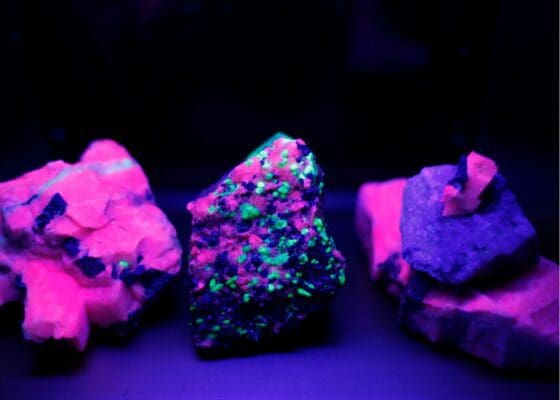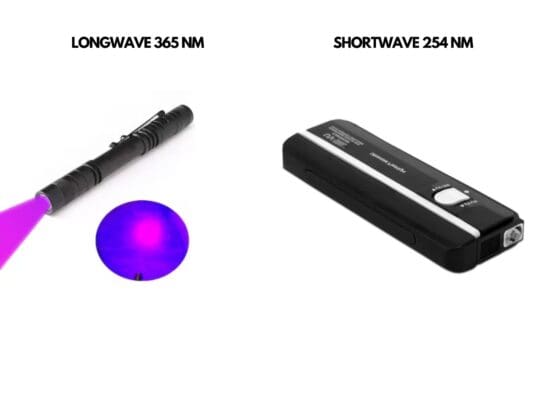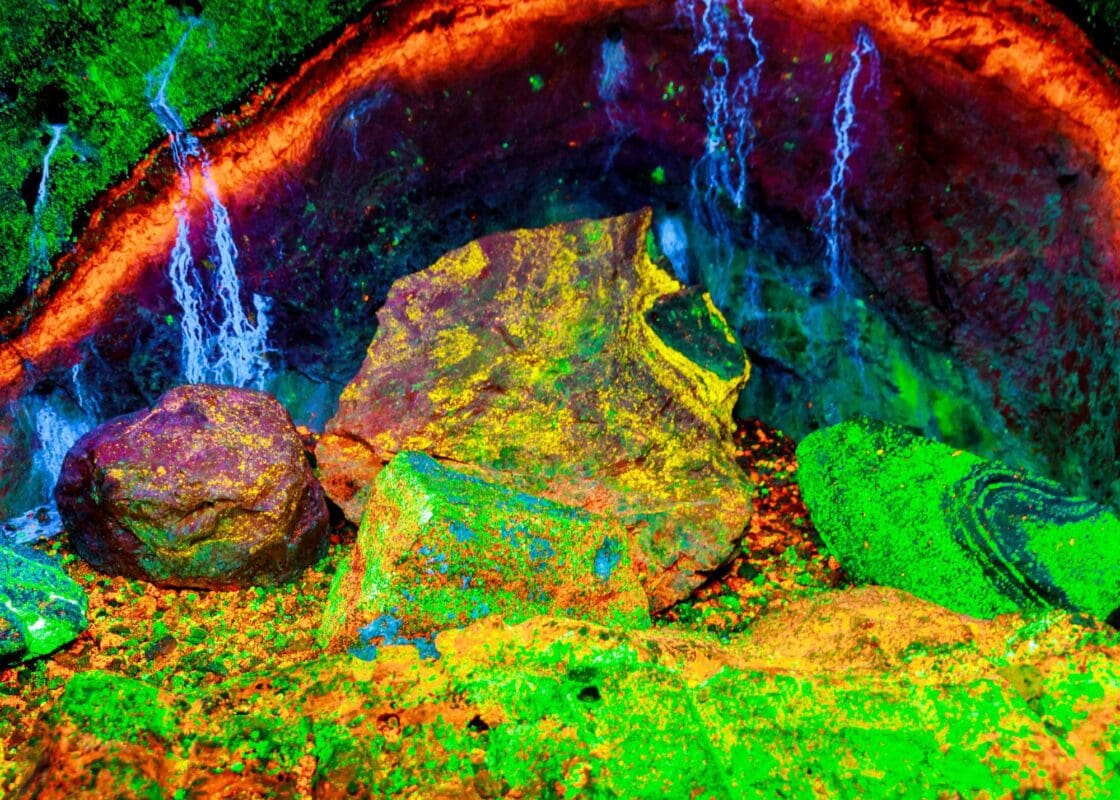Identifying Fluorescent Minerals: A Comprehensive Guide
Introduction Fluorescent minerals have fascinated enthusiasts and researchers for decades. Their ability to glow under specific lighting conditions is not only intriguing but also scientifically significant. In this guide, we will embark on a comprehensive exploration of the methods, tools, and techniques used in identifying fluorescent minerals.

Why Fluorescent Minerals Glow
The Science Unfolded
Before diving into the intricate world of identifying fluorescent minerals, gaining insights into the mesmerizing phenomenon of their glow – a distinctive characteristic – is indispensable. This luminescence isn’t just a visual spectacle but a scientific occurrence grounded in the principles of physics and chemistry.
Absorption of Light
At the core of this captivating phenomenon is the mineral’s ability to absorb light at a specific wavelength. This process isn’t arbitrary; rather, it’s deeply rooted in the mineral’s molecular structure. The atoms and molecules that constitute these minerals are configured in such a way that they can absorb photons of light, leading to a state of excitation.
Excitation State
When the mineral absorbs light, electrons within the atom are elevated to a higher energy state, leading to an ‘excited state’. However, this state is unstable; the electrons seek to return to their ground state. It’s this journey back to equilibrium that births the captivating glow synonymous with fluorescent minerals.
Emission of Light
As the excited electrons cascade back to their original energy levels, they release energy in the form of photons. Interestingly, these emitted photons have less energy than those absorbed – they are of a longer wavelength. This shift in energy levels is what we perceive as the visible glow, painting the minerals in awe-inspiring, vibrant hues.
Factors Influencing the Glow
It’s pivotal to note that not all fluorescent minerals glow alike. Variations in color and intensity are influenced by an array of factors, including the mineral’s chemical composition, the presence of impurities, and the wavelength of the absorbed light. Every mineral has its unique ‘fluorescent signature’, a complex interplay between its structural attributes and external influences.
Real-World Application
Understanding the science behind the glow of fluorescent minerals isn’t just an academic pursuit. It has practical applications, too, including the identification of minerals, understanding geological formations, and even applications in art and decorations.
Methods of Identifying Fluorescent Minerals

- Shortwave and Longwave UV Light The most common method to identify these glowing gems is by using ultraviolet (UV) lights. When exposed to shortwave or longwave UV light, fluorescent minerals will glow, often in vivid colors.
- Spectroscopy While UV lights can give us a visual confirmation, spectroscopy provides the scientific details. Using a spectrometer, one can measure the specific wavelengths at which a mineral fluoresces, providing a unique “signature” for that mineral.[Insert a graph image showing the spectrum of a popular fluorescent mineral]
- Physical Examination Some fluorescent minerals have specific physical properties that can be indicators even without the use of UV light. These could include streak, hardness, and cleavage. However, UV testing remains the most definitive method.
Tools Essential for Identification

- Portable UV Lamp: A must-have for any collector or researcher. These are available in various forms, including flashlights and hand-held lamps.[Insert image of a portable UV lamp]
- Spectrometer: For those taking a deep scientific approach, a spectrometer is invaluable. This tool measures the intensity of the emitted light at each wavelength, giving a detailed picture of a mineral’s fluorescent properties.
- Identification Field Guide: A comprehensive field guide can provide images and descriptions to aid in identifying fluorescent minerals.[Insert image of a popular fluorescent mineral field guide]
Conclusion
Identifying fluorescent minerals is a blend of art and science. While the allure of their glow is captivating, understanding their properties and the tools needed to identify them only deepens the appreciation for these natural wonders. Dive deeper into the world of fluorescence by checking out our cornerstone article: The Ultimate Guide to Fluorescent Minerals: Identification, Benefits, and Collection.

